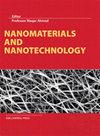从鲍鱼壳(Haliotis asinina)废料中提取纳米碳化羟基磷灰石作为骨组织工程生物陶瓷的候选材料
IF 3.3
3区 材料科学
Q2 MATERIALS SCIENCE, MULTIDISCIPLINARY
引用次数: 5
摘要
在本研究中,以鲍鱼壳(Halioitis asinina)为钙源,采用沉淀法成功合成了纳米碳酸化羟基磷灰石(n-CHAp)。沉淀法随老化时间变化,即0(无老化过程)、24和48小时。基于X射线衍射表征的分析,显示了所有样品在老化时间变化时的n-CHAp光谱。晶格参数值的计算结果证实,所形成的相是结晶度、晶粒尺寸、颗粒尺寸和多分散性增加的B型CHAp相,这通过在1438 cm−1和878 cm−2处存在CO32-官能团来证实,即B型碳酸盐取代特征。在老化时间的延长过程中,被鉴定为较小的碳酸盐离子的存在导致Ca/P摩尔比的值降低,但其值仍大于HAp Ca/P值(1.67),即1.80–1.72。基于透射电子显微镜分析,成功地获得了纳米尺寸的B型CHAp颗粒。根据纳米结构、晶体性质、碳酸盐含量和化学过程的标准,基于鲍鱼壳(Halioitis asinina)的B型CHAp样品是骨组织工程应用生物陶瓷的候选样品之一。本文章由计算机程序翻译,如有差异,请以英文原文为准。
Nano-carbonated hydroxyapatite precipitation from abalone shell (Haliotis asinina) waste as the bioceramics candidate for bone tissue engineering
In this study, nano-carbonated hydroxyapatite (n-CHAp) was successfully synthesized with abalone shells (Halioitis asinina) as the calcium source using precipitation methods with aging time variations, namely, 0 (without the aging process), 24, and 48 h. Based on an analysis of X-ray diffraction characterization, the spectrum of the n-CHAp is shown for all sample variations in aging time. The results of the calculation of lattice parameter values confirm that the phase formed is the B-type CHAp phase with the increasing crystallinity degree, crystallite size, particle size, and polydispersity which is confirmed by the presence of the CO32- functional group at 1438 cm−1 and 878 cm−1, that is, the B-type carbonate substitution characteristic. The presence of the carbonate ions identified as smaller during the extension of aging time causes the decreasing value of the Ca/P mole ratio but still has a value greater than the HAp Ca/P value (1.67), which is 1.80–1.72. Based on the transmission electron microscopy analysis, the nanometer-size of B-type CHAp particles was successfully obtained. According to the criteria for nanostructures, crystallographic properties, carbonate content, and chemical processes, B-type CHAp samples based on abalone shells (Halioitis asinina) are one of the candidates in bioceramics for bone tissue engineering applications.
求助全文
通过发布文献求助,成功后即可免费获取论文全文。
去求助
来源期刊

Nanomaterials and Nanotechnology
NANOSCIENCE & NANOTECHNOLOGY-MATERIALS SCIENCE, MULTIDISCIPLINARY
CiteScore
7.20
自引率
21.60%
发文量
13
审稿时长
15 weeks
期刊介绍:
Nanomaterials and Nanotechnology is a JCR ranked, peer-reviewed open access journal addressed to a cross-disciplinary readership including scientists, researchers and professionals in both academia and industry with an interest in nanoscience and nanotechnology. The scope comprises (but is not limited to) the fundamental aspects and applications of nanoscience and nanotechnology
 求助内容:
求助内容: 应助结果提醒方式:
应助结果提醒方式:


